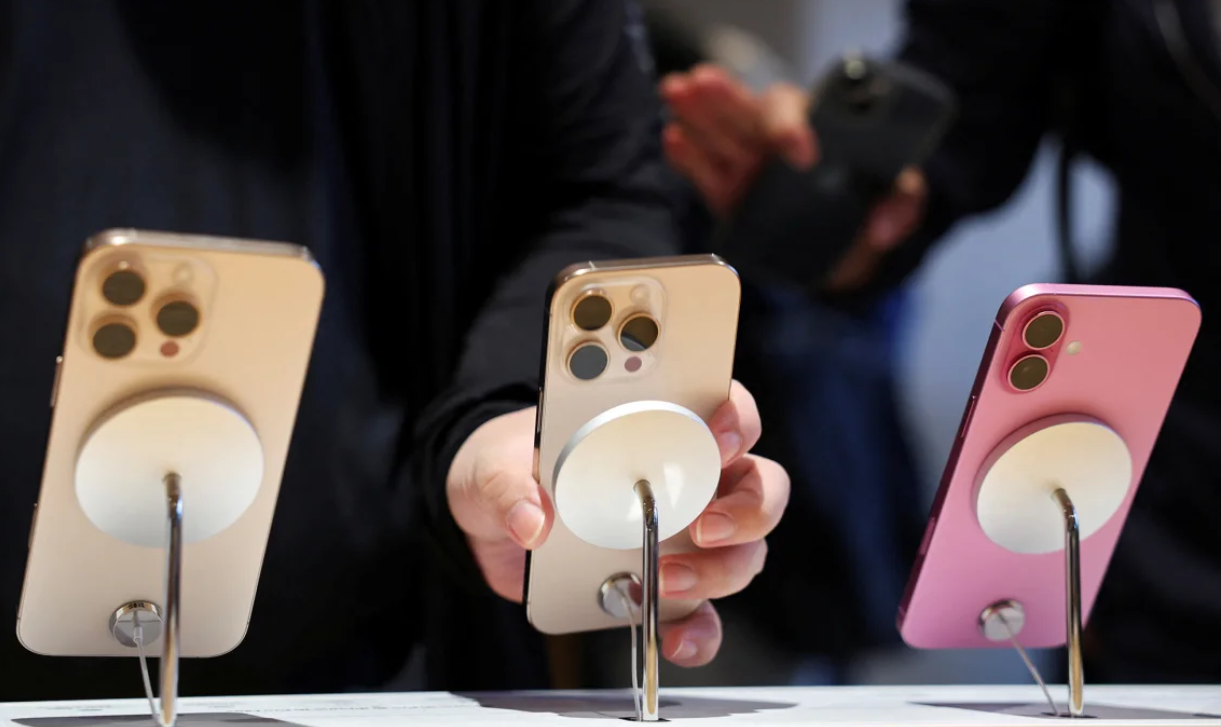Apple is preparing to introduce a major update to its most profitable product – the iPhone. The company is expected to release a much slimmer iPhone later this year, possibly as part of the iPhone 17 lineup. This new model, referred to in media reports as the iPhone “Slim” or “Air,” will mark the most significant design change since the iPhone X debuted in 2017, which removed the home button.
Although the iPhone business remains stable, with smartphone sales holding steady and overall revenue growing by 4% in the first fiscal quarter, Apple faces significant challenges. Consumers are holding onto their phones for longer periods, iPhone revenue missed Wall Street’s expectations last quarter, and Apple is losing market share in China to local competitors. The company must find ways to grow its most valuable business.
This isn’t a new issue for Apple, as it has long faced pressure to evolve its iPhone product line amid a stagnant smartphone market and tough competition, especially in China. Apple’s recent focus on artificial intelligence, which it marketed as a key feature in the iPhone 16, has taken longer than expected to show results. As a result, Apple may need to rely on physical device improvements to capture consumer interest.
The slimmer iPhone 17 is expected to be about two millimeters thinner than the current iPhone, with a design that will likely replace the larger iPhone Plus in Apple’s lineup. While the phone’s slimmer build will be its main selling point, it will retain features like the dedicated camera button and Dynamic Island cutout near the top of the screen.
This redesign could resonate particularly well with consumers in China, where product design is highly valued. Apple’s performance in China has been struggling, with revenue dropping from $21 billion in the previous year to $18.5 billion in the latest fiscal quarter. Additionally, sales of iPhones in China fell 25% year-over-year in the fourth quarter due to increased competition from Chinese smartphone brands. In fact, Chinese tech company Xiaomi surpassed Apple to become the second-largest smartphone brand globally in August.
“Hardware innovations are very important to Chinese consumers,” said Nabila Popal, an expert in smartphone and consumer tech research. She believes that given the success of thinness in Android devices, Apple launching a slimmer iPhone could help it capture more market share in China.
However, Apple’s competitors have already introduced similar products. Samsung revealed its Galaxy S25 Edge in January, a thinner version of its latest smartphone. Oppo, a significant player in the Chinese smartphone market, launched the Find N5, an ultra-thin foldable phone, in February.
Despite the sleek new designs, some analysts argue that Apple will need more than just a visually appealing phone to attract customers. The company must convince users that upgrading to a new iPhone is worth it, whether their old device needs replacing or not.
Smartphones have become mature products, with less dramatic changes year after year. In the early 2010s, purchasing a new phone often meant significant advancements, such as unlocking with a fingerprint or having a larger screen. According to UBS analysts, iPhone users in markets outside of China are holding onto their phones longer. In their March 25 report, they noted that the average iPhone user keeps their device for 37 months, up from 34 months the previous year.
Apple may be hoping its AI-powered software, Apple Intelligence, can encourage users to upgrade. However, the current capabilities, like summarizing notifications, creating custom emojis, and assisting with tech support, don’t seem compelling enough to drive a new phone purchase. Apple had also planned to launch a revamped Siri with more advanced features, including the ability to perform actions in apps and use personal data to tailor responses. However, this update has been delayed and is expected to debut next year.
Apple will likely provide a sneak peek of the upcoming features during its Worldwide Developers Conference on June 9, which could give consumers a clearer idea of how AI might transform their iPhone experience.
Whether these upcoming innovations can convince users to upgrade will be crucial for Apple. Wall Street is closely monitoring whether the new features, either smarter software or a sleeker design, will drive sales.
“There’s probably no economic reason to upgrade right now if you have an iPhone 14 or even a 15,” said David Vogt, an analyst with UBS. “And I think that’s the pressure Apple feels.”
